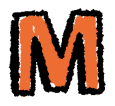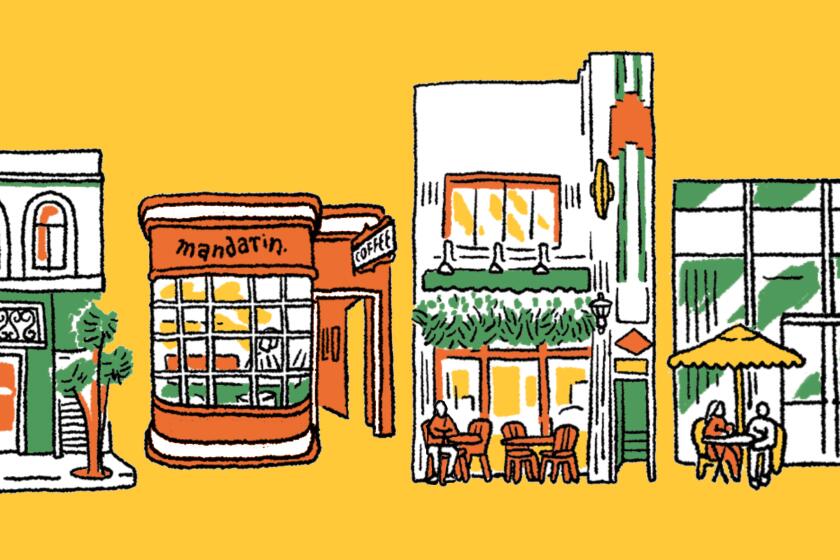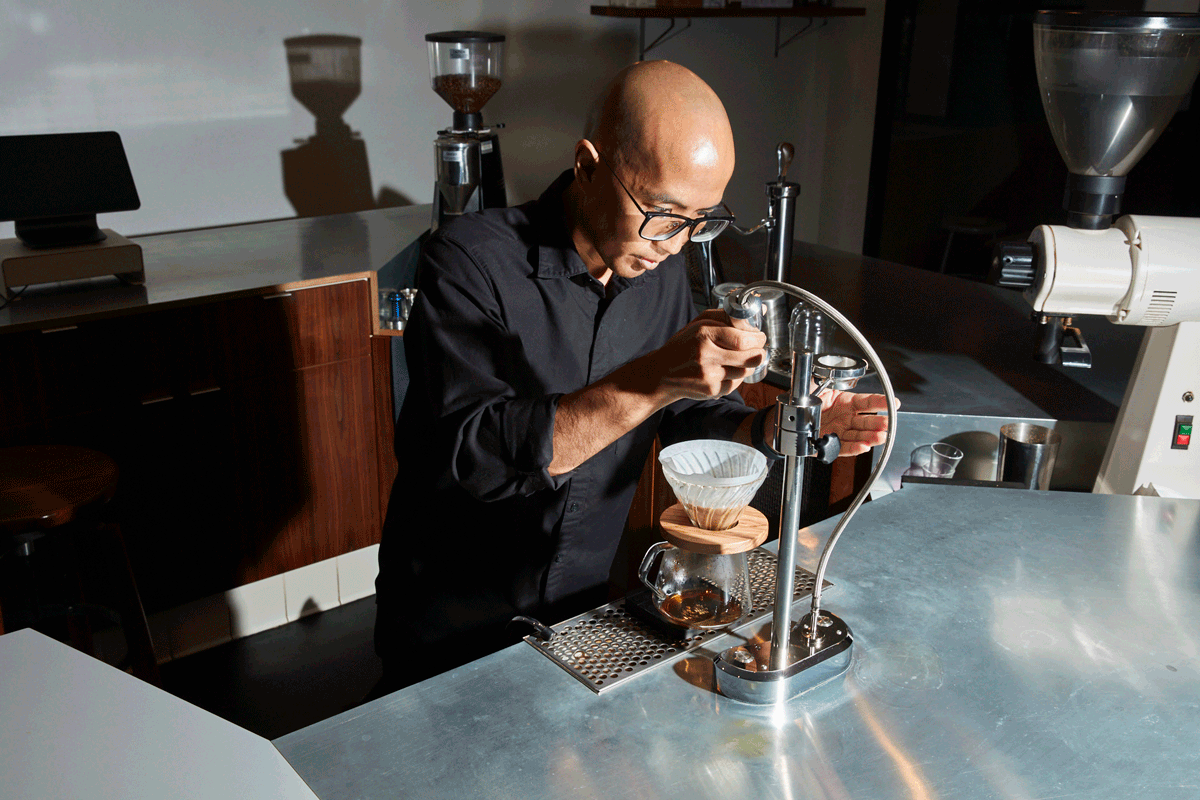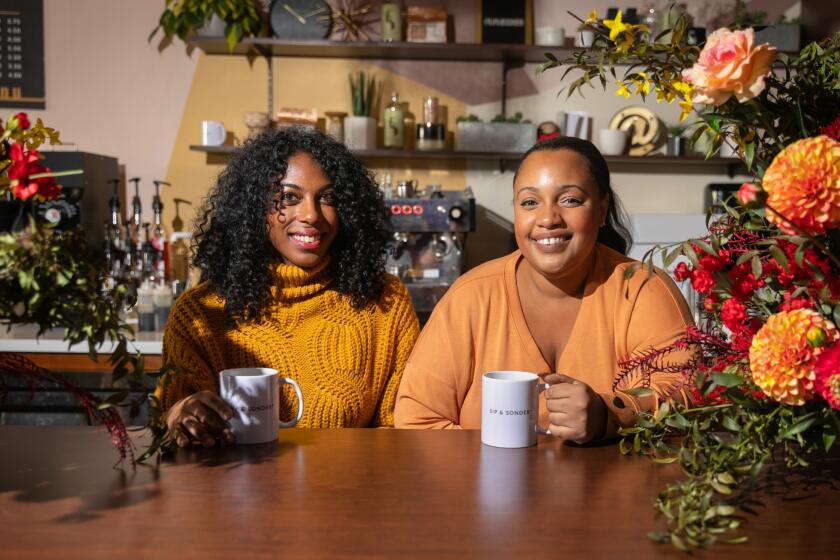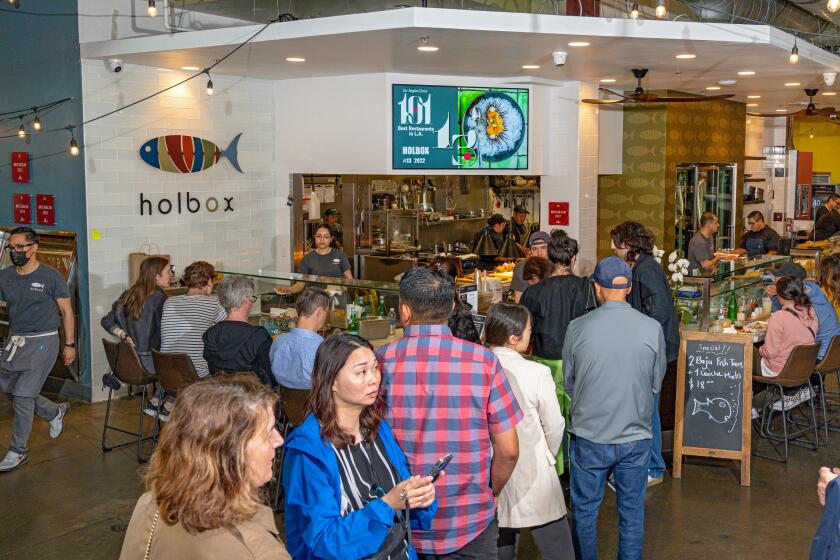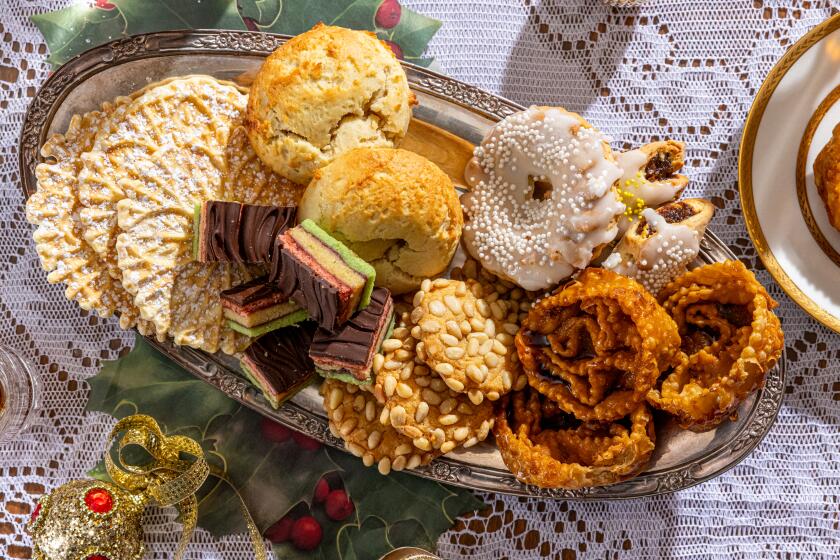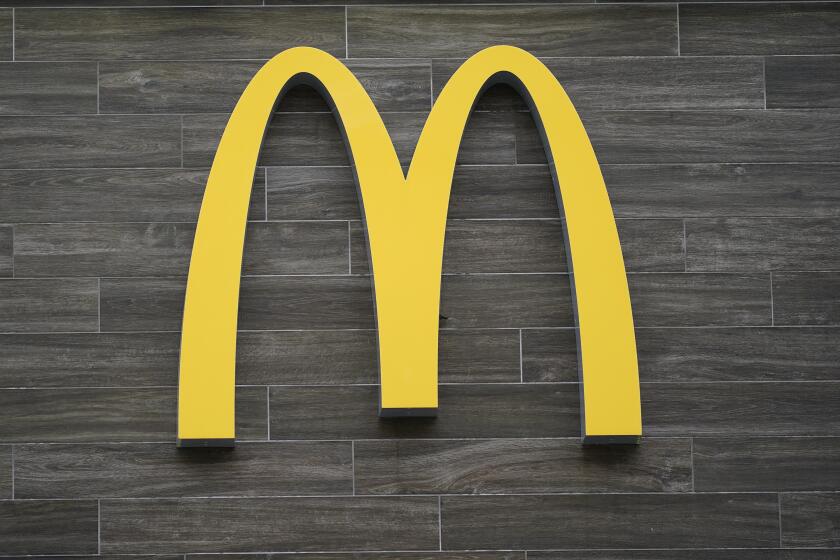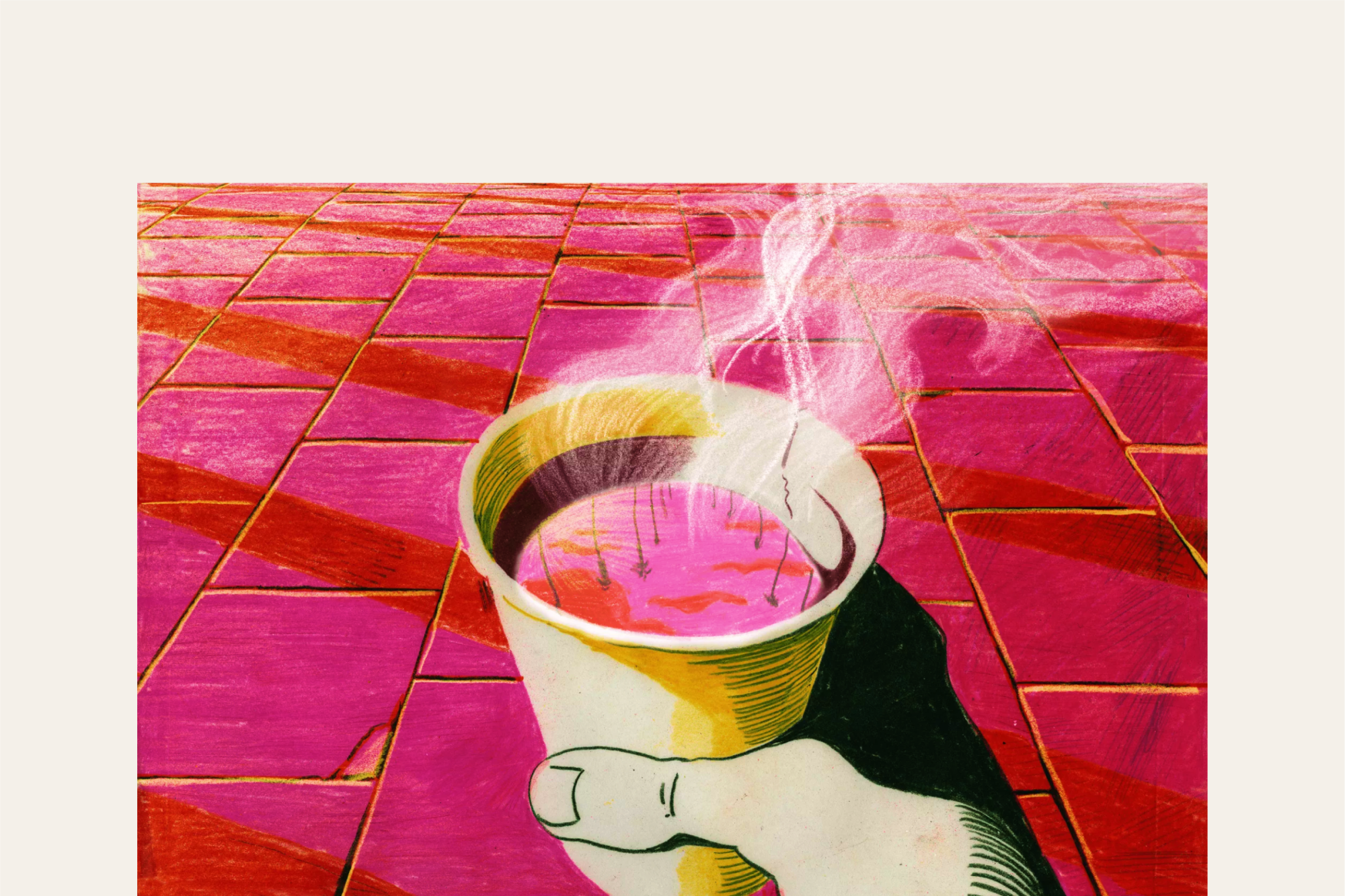
What should we expect from a cup of coffee in Los Angeles? Almost anything, our critic learns.
Mondays are Jack Benchakul’s favorite day of the week at Endorffeine. He looks forward to the calm, even though he’s grateful for the streams of coffee fans that file into his tiny shop on Saturdays and Sundays. Ttaya Tuparangsi, his cousin, takes orders from the no-nonsense menu of options: espresso, cortado, cappuccino, latte and pour-over. From the beginning it has been only the two of them.
Benchakul has made every drink since the pair moved into the space on the ground floor of Chinatown’s Far East Plaza in 2015. He’s a barista’s barista, the kind of maestro to whom other coffee professionals come to study his moves. Me too: I know that Mondays are the day Benchakul has the time to be peppered with questions about his pour-over know-how, a method I’m slowly attempting to master at home.
Late on these mornings, maybe one other customer can be glimpsed through Endorffeine’s glass storefront. Inside, Benchakul’s shaved head often hovers just above the counter at eye level. He squats to study the progress of each espresso shot. He’s thinking about things such as flow distribution, flow rate and discernible shifts in viscosity to determine the exact second to terminate an espresso pull.
Find the best cafes, freshest brews and your favorite beans in the coffee-shop capital of the world.
That’s eye-rolling verbiage to the 99% of us looking for a fast, comforting pick-me-up. What’s most important is that Benchakul’s geeky perfectionism — he’s a biochemist turned pastry chef turned barista — translates to exceptionally delicious coffee: smooth and balanced in acidity, devoid of overt sour or bitter aftertaste. He doesn’t push any science jargon on his customers unless they’re inquiring.
On a recent Monday I’m watching Benchakul brew a pour-over in a glass Hario V60, a cone-shaped dripper fitted with a thin filter that’s favored by many seasoned baristas. He moves the water wand in his hand in fast clockwise circles over the coffee grounds, creating a murky well. Benchakul is known among coffee geeks for his water recipes — customized blends of minerals he mixes into water in weekly batches for the drinks he serves. He experimented for years to land on a formula, with variations based on different coffees, that boosts pleasant acidity and contributes to a round, soft texture.
I’ve found no better place to drink a pour-over in Los Angeles, and that’s saying something given the city’s astonishing breadth of options. L.A. has reached an apex in its specialty coffee culture — a critical mass of talent personalizing the ubiquitous beverage with obsessive brewing and roasting techniques, connections to farmers and originality with flavor combinations. Endorffeine exemplifies the moment.
Benchakul favors a Nordic style of coffee roasting — lighter, more expressive of the bean’s terroir than its roasted flavors, notes of berries or citrus or stone fruit or spices, sometimes combined, like you can discern in elegantly made wine and carefully crafted loose-leaf tea. Many of the specialty coffee bars that brew and sell multiple roasters’ beans prefer this approach. The wonders of fermentation: I taste peaches and cinnamon in a pour-over Benchakul makes using Burundi beans from Brooklyn-based Sey, the roaster whose beans he brews more than any other.
Angelenos tend to vibe with places where excellence and personal narrative intersect.
He keeps his gaze on the pour-over while I rev up my friendly interrogation. Today’s subject is grind consistency; I’ve been reading how some coffee experts believe pour-overs should be made with the beans pulverized to a powdery fineness. Benchakul pushes up his glasses with his forefinger and thumb as he considers this.
“I actually take a near-opposite approach,” he says.
We talk this through as I sip my coffee — a cup filled with the platonic ideal of what I’d like to be brewing each morning in my own kitchen — and I think about how much I still have to learn.
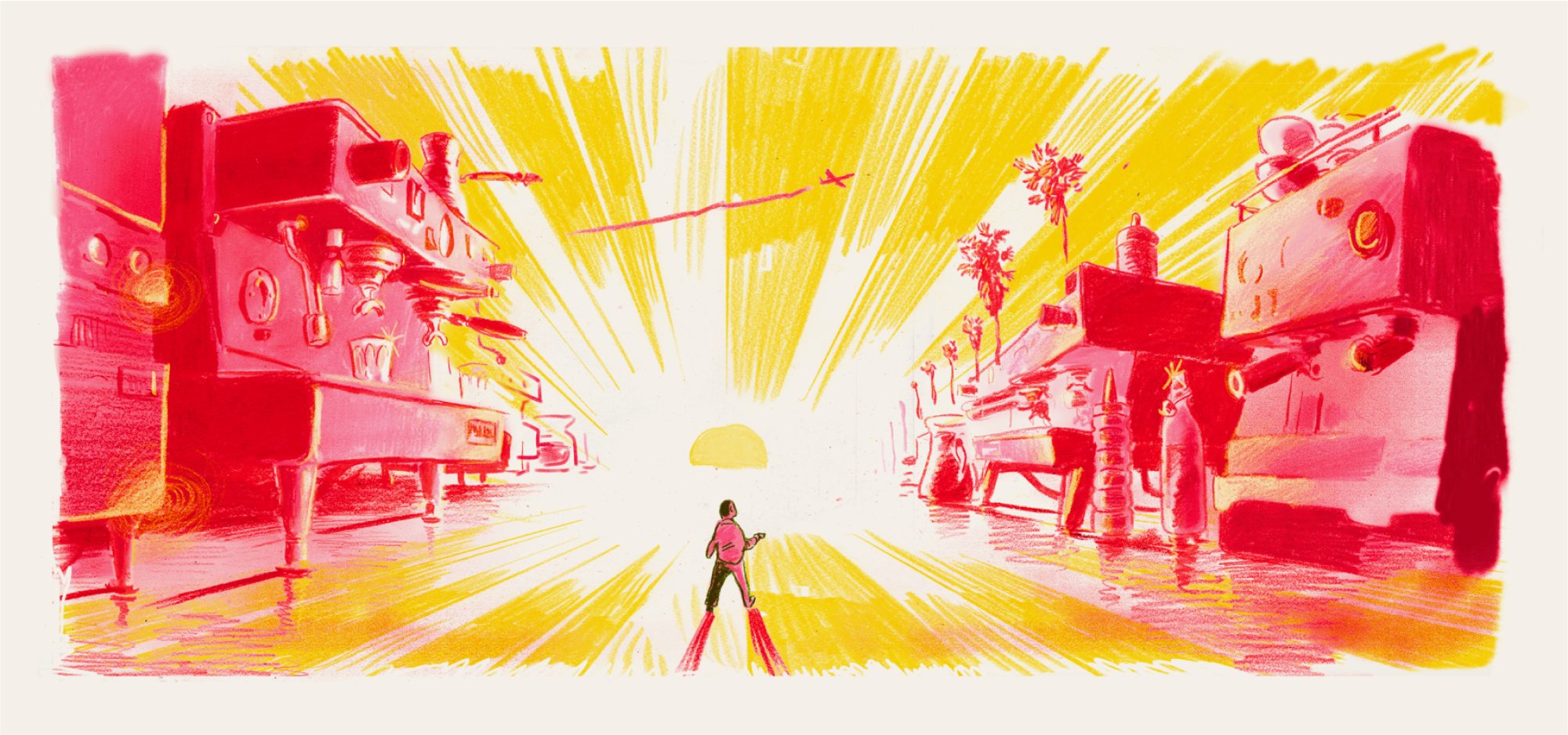
What makes Los Angeles a city with a world-class coffee culture? It’s the same ingredient that gifts us with a peerless dining scene: pluralism.
It isn’t only our vastness, populated by people of all backgrounds who fuel themselves with caffeine to start or keep powering through their days. We’ve reached a decisive moment of quality and diversity around coffee in L.A. You can drink finely tuned espressos, cold brews and set-the-bar-high drip coffee in every nook of the region. You can seek out traditions from all over the world, from coffee ceremonies in Little Ethiopia to sand-brewed Turkish coffees at a knafeh pop-up in Northridge. Baristas and coffee bar owners reflect our communities. They pour their own narratives into the atmospheres they create; the philosophies they share with the roasters from which they source, the small farms from which they buy beans and the bakers whose pastries they sell; and the entrepreneurial impulses they follow into roasting and expanding their businesses.
Head to these coffee shops in L.A., Hollywood, Culver City, Santa Monica and beyond, for great espresso drinks, lattes and pour-overs and options for remote work.
Angelenos tend to vibe with places where excellence and personal narrative intersect. Maru founders Joonmo Kim and Jacob Park, as one example, named their growing company from two syllables of the Korean word sanmaru, or mountaintop — a reference to both the high altitudes at which premium coffee is often grown and also the tranquil surroundings of Buddhist temples set in the mountains of Korea. If you stick around to drink your cream-top iced coffee in either their Los Feliz or Arts District shops, you can sense the serenity Kim and Park hope to foster in the clean lines and light woods of their design.
Part of what makes Benchakul such a standout figure is the way he integrated his scientist and coffee-lover identities: He was working in cancer research at a biopharmaceutical company when he landed a job at now-closed Cafe Demitasse in Little Tokyo and switched professions in 2011. (Demitasse and its chocolatey, nerd-magnet “Kyoto-style” cold brew, extracted in what looked like a chemistry set designed by Dale Chihuly, was my entryway into the local specialty coffee as a frequent traveler to L.A. before I moved here in 2018.) Talking about calcium content in the brewing water as a means to a sweeter-tasting espresso at Endorffeine could sound like the height of pretension. If you talk with Benchakul, though, he radiates sincerity. His aim is simply to make coffee you’ll love.
The upshot of so many choices in Los Angeles: It’s the ultimate city in which to ask, “What am I looking for in a coffee shop experience?” There are as many answers as there are questions. A starting point might be: “How about you tell me where to get a regular ol’ cup of good coffee without so much chatter?” It’s a fair ask, and I’ll start by directing you to Go Get Em Tiger and Civil Coffee; each has multiple locations.
But far more specific desires can be fulfilled here too. Looking to feel a sense of belonging? I find that at LGBTQ-friendly Bloom & Plume in Historic Filipinotown; the coffeehouse, with its iris-purple exterior, feels like an aesthetic and spiritual extension of Maurice Harris’ next-door floral design studio of the same name.
From downtown to Inglewood and as far as Garden Grove, Black-owned coffee shops are claiming their place in the city’s stimulating scene.
Somewhere to work without distraction? Goodboybob in Santa Monica looks like the swank living room I’ll probably never in fact occupy; Sip & Sonder in Inglewood is unusually spacious yet cozy; and Eightfold in Echo Park is small and minimalist but frequented by regulars staring into their laptops with as much intensity as I soon hope to be.
A place to browse boxes and bags of beans with tempting tasting notes from roasters all over the world? Dayglow, with locations in Silver Lake and West Hollywood, is my candy store for Nordic-style roasts.
A destination for trying something entirely new in the coffee realms? I gladly join the line trailing ceaselessly out the door of Kumquat in Highland Park. Its menu of espressos and pour-overs is a living document; there’s always a roaster I’ve never heard of, beans from corners of the coffee-growing world with which I’m unfamiliar, and a staffer behind the counter ready with enlightening talking points. In its dedication to showcasing emerging roasters, Kumquat feels most like the place where the future of coffee drinking in L.A. is unfolding in real time, batch by batch.
Plenty of coffee drinkers are not looking for “new.” They might be open to the latest experimental natural wine, or rotate flavors of boba to see if they prefer yuzu or passion fruit, but there is no varying from the morning vanilla latte or dark roast with three sugars. Coffee is the stuff of daily routines and personal rituals.
This is true in my household. I have come to coffee obsession late in life, really in the four years I’ve been with The Times. I’ve been a serious tea drinker for much longer; pour-overs, as I’m reminded by visiting friends who want their joe strong and viscous and don’t much appreciate my fiddly efforts, are as close to tea as brewed coffee veers.
During a few recent, rewarding and jittery weeks spent criss-crossing the metro area for coffee research, I started from my purist’s stance: I drank mostly pour-overs and straight espresso shots or minimum-milk macchiatos. The clarity of the coffee flavor was the sole objective.
Kumquat changes its lineup of coffees monthly, including additions of restrained, calibrated coffee drinks. For February, the shop introduced a Valentine’s-themed concoction: the Ruby Marocchino espresso mixed with hot chocolate ganache and pineberry syrup. It tasted like strawberries and pineapple dipped in chocolate, plus coffee. I couldn’t deny the appeal. It reminded me that part of the greatness of L.A. — coffee and otherwise — is an openness to creative statement. I began to imbibe with a more open mind.
This is how I came to admire the espresso tonic at Mandarin Coffee Stand in Pasadena. Sherry Gao uses homemade pineapple jam rather than a typical citrus accent, and it pings the drink with equal sweetness and tartness. At Thank You Coffee in Chinatown and Anaheim, the signature blue pandan milk turns more gray than cerulean, but pandan’s herbal-vanilla flavor weds with the coffee to create a haunting third taste.
Any limiting dogma that remained in me dissolved when I walked into Dudley Market in Venice a couple of Sundays ago. I was there for the Hooked coffee pop-up that runs out of the restaurant most mornings. I didn’t know much about Hooked when I arrived; a trusted colleague had recommended it. The barista had his back to me when I approached the counter; he pulled espresso shots while carrying on a conversation with a woman sitting at the bar near his workstation. When the barista turned around, I realized who it was: Christopher “Nicely” Abel Alameda, a legend in the L.A. coffee scene who has won multiple latte art competitions.
You don’t forget Alameda. He’s one of those people who seems as if a sunlike source of light surges out of him. I met him last year when he was manning the bar at the Silver Lake location of Dayglow. I was looking for advice on which beans to buy, and he had plenty to say. He moved fast, talked fast and had a bedrock confidence about coffee that came off as reassuring rather than arrogant.
I asked him at Hooked what I should order. He suggested a cafe rico, an espresso drink from his days as the founding barista at Menotti’s Coffee Shop less than a mile away. Alameda scents a cortado with orange zest, vanilla syrup and cinnamon — nothing outlandish or alchemical but a drink in perfect proportions. The swerving, heart-shaped art drawn with foamed milk was, as ever, gorgeous. It’s a modern L.A. classic, as satisfying in its own way as Benchakul’s pour-overs.
Light, medium or dark roast? Notes of apricot, chocolate, pecan? Arabica or robusta? What’s the ‘L.A.’ style? All your coffee bean questions answered.
Coffee, at home or out in the world, is so much about personal taste. But in the land of possibility, if you trust a favorite barista, you never know what wonderful universes might open at the bottom of a cup.
Eat your way across L.A.
Get our weekly Tasting Notes newsletter for reviews, news and more.
You may occasionally receive promotional content from the Los Angeles Times.
